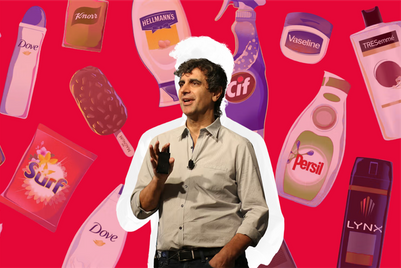
| PARTNER CONTENT |
GroupM China recently released their new “Social White Paper in Beauty category 2018”. The paper looks in detail at social media marketing in the cosmetics industry, including: consumer insights, brand and campaign analysis, Top 100 influencer lists, inspiring case studies and more.
From awareness to online sales, social media platforms in China such as Weibo, WeChat and Little Red Book have become increasingly important in the consumer purchase journey. As a result, companies are placing a much greater focus on promoting their brands and products, and marketing themselves on social media. The social media marketing techniques used by cosmetics brands in the report can serve as a fascinating source of inspiration for marketers across the industry.
The male market for cosmetics
Cosmetics aren’t just for women. In fact, some 22 percent of individuals discussing cosmetics are men. Through the TV show Queen, Kevin Chou and Perry laid the foundation for the emergence of male cosmetics KOLs, while at the same time paving the way for many professional male skin care brands in China.
In addition to a gender imbalance, cosmetics groups on social media platforms also tend to be dominated by the 18-30 age range. As these individuals make the transition from school to the workplace, they often end up selecting different cosmetics for different occasions. Brands should tailor their social media communications to address the differing needs of students and professionals alike, using more direct language in the process.
The immense influence of KOLs
The “man slayer look” and the “peach blossom look” are terms created by KOLs, now widely shared among cosmetic communities on Weibo, WeChat and Little Red Book. There are plenty of ongoing discussions on social media about the colours of celebrities’ lipstick, but it’s actually the lipstick tests conducted by KOLs that prompt users to make a purchase.
Furthermore, many popular lipstick colours are now referred to by the name bestowed upon them by KOLs, rather than by their brand-assigned colour numbers. The evocative name “man slayer” is not just easy to remember, it also piques consumer curiosity. By working with cosmetics KOLs to create more consumer-friendly vernacular, brands can strengthen their appeal.
Big brand or limited edition?
Armani, Yves Saint Laurent and Dior have the world’s leading foundation brands. These mainstays are the most vocal in the industry and each has a standout product with obvious advantages. Nevertheless, smaller cosmetics brands can entice customers with a penchant for limited edition packaging. Packaging that is cobranded with a celebrity or famous blogger, or has a special holiday theme, is much more likely to turn eyeballs and become a topic of discussion on social media platforms.
Trending: Little Red Book
Finding the right platform is key to marketing cosmetics on social media, and one of the primary social media platforms for reaching out to cosmetics consumers in China is Little Red Book, which has developed from a community of cosmetics fans to a women’s lifestyle-focused vertical community. Brands would be wise to concentrate communication efforts on Weibo, WeChat and Little Red Book, but also use vertical cosmetics apps to expand into lower-tier cities.
Hongxi, GroupM’s proprietary tool for analysing Little Red Book, helps companies analyse brand mentions, product reputations, user attitudes and other attributes. It also provides suggestions for improving social media communication. Brands can use the platform to analyse popular articles, and better understand topics, celebrities and KOLs that users are most interested in. The aforementioned whitepaper also provides a handy list of the Top 100 Influencers on Little Red Book in 2018.


.jpg&h=334&w=500&q=100&v=20250320&c=1)


.jpg&h=334&w=500&q=100&v=20250320&c=1)
.jpg&h=334&w=500&q=100&v=20250320&c=1)

.jpeg&h=334&w=500&q=100&v=20250320&c=1)


.jpg&h=334&w=500&q=100&v=20250320&c=1)
.jpg&h=268&w=401&q=100&v=20250320&c=1)
.jpg&h=268&w=401&q=100&v=20250320&c=1)


.jpg&h=268&w=401&q=100&v=20250320&c=1)
.jpg&h=268&w=401&q=100&v=20250320&c=1)
.jpg&h=268&w=401&q=100&v=20250320&c=1)
.jpg&h=268&w=401&q=100&v=20250320&c=1)